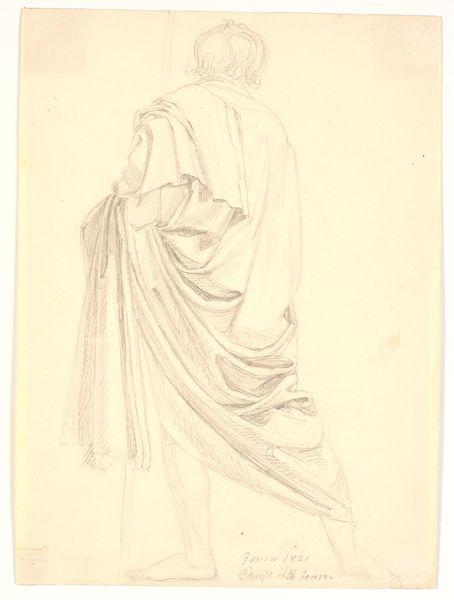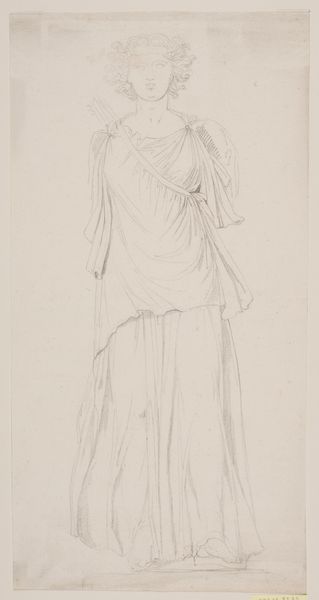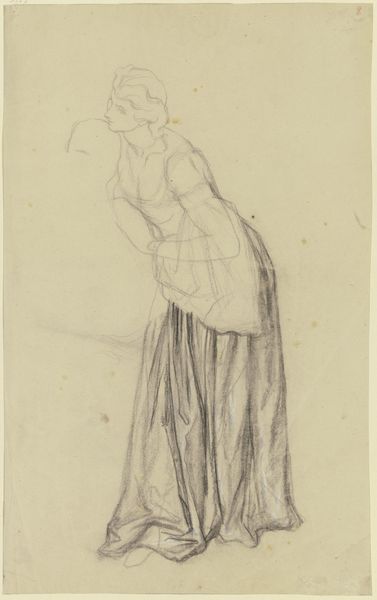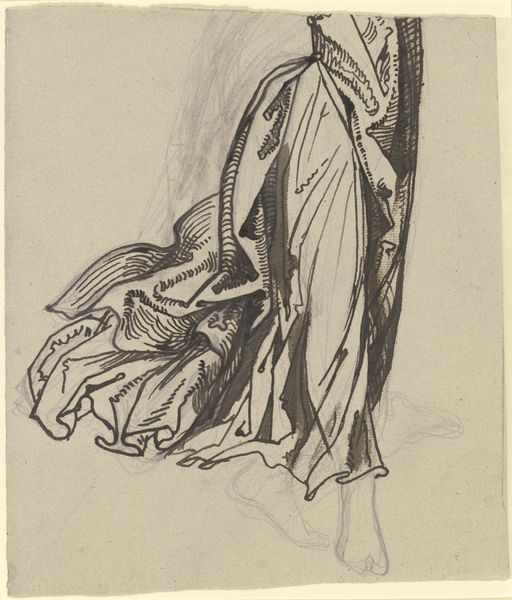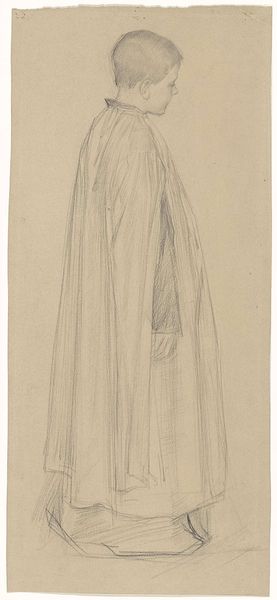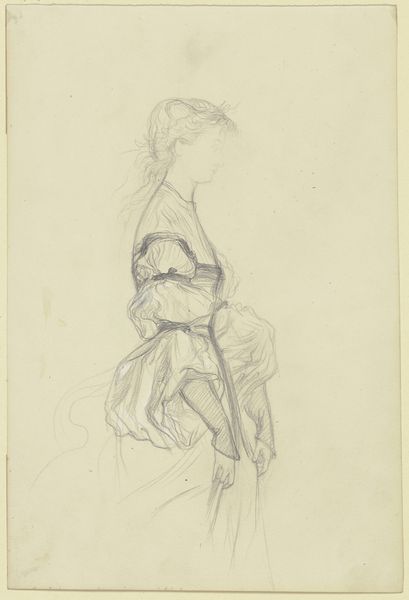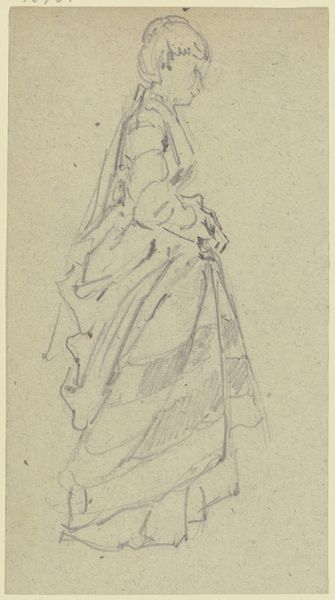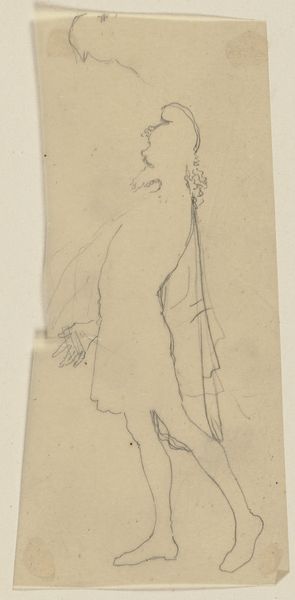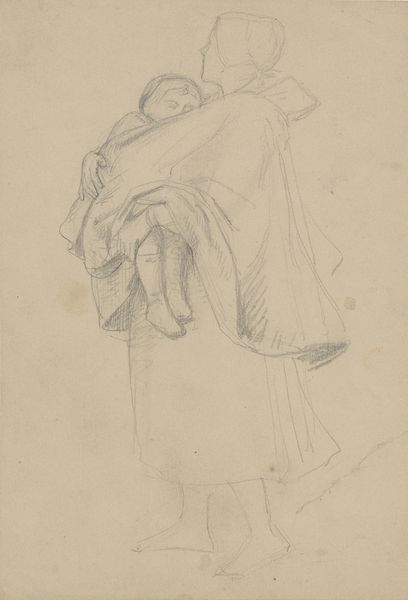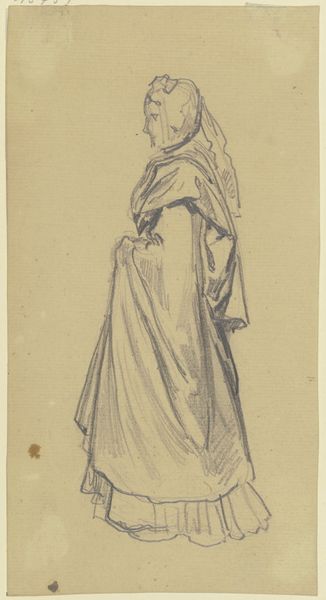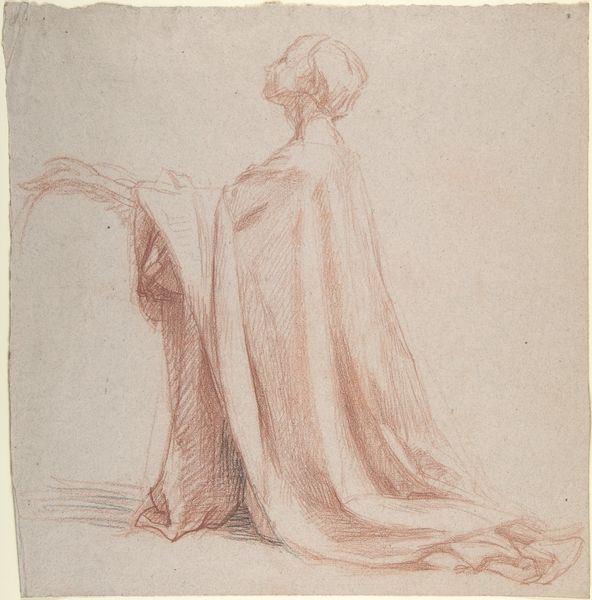
drawing, paper, pencil
#
drawing
#
16_19th-century
#
pencil sketch
#
figuration
#
paper
#
pencil
#
academic-art
Copyright: Public Domain
Victor Müller created this graphite drawing of a garbed figure, presently held at the Städel Museum, sometime in the mid-19th century. Müller, working in Germany, was part of a generation of artists grappling with the legacy of Neoclassicism and the rise of Romanticism. The figure's classical garb and idealized form hark back to an interest in ancient Greece and Rome that had, by this time, become a standard part of academic artistic training. However, the sketch-like quality of the drawing, with its loose lines and unfinished feel, suggests a departure from the highly polished, finished style of Neoclassical art, indicative of the changing tastes and the shifting institutional structures of the art world at the time. To fully understand this work, one might delve into the curriculum of art academies in 19th-century Germany and also explore the relationship between artistic production and the rise of nationalism. Art history, then, helps us see how artistic styles are not simply matters of individual taste, but are deeply embedded in social and institutional contexts.
Comments
No comments
Be the first to comment and join the conversation on the ultimate creative platform.
